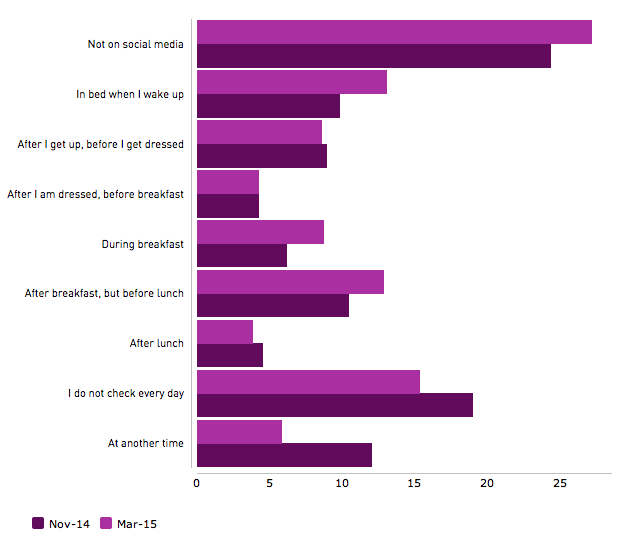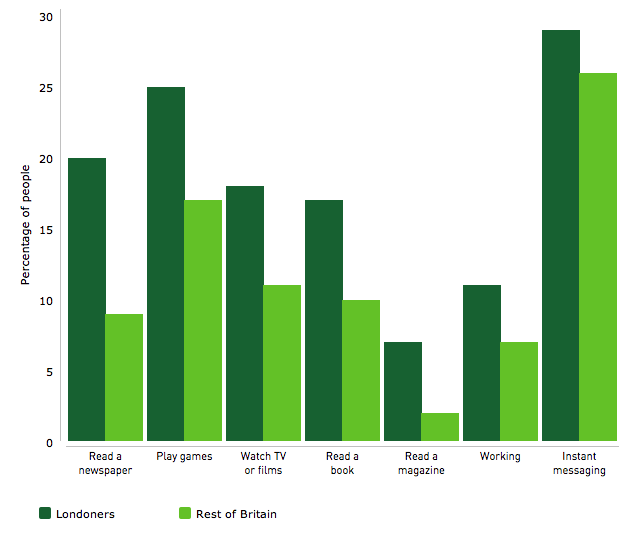If you sometimes feel guilty chatting with a friend on mobile/tablet in front of your desk during the working hours, you are not alone: a recent study of 3,500 American adults of different ages reveals 58% do so every day and feel guilty too. Here are the five most recent trends on how we use tech to consume media content and socialise from Deloitte, Kantar Woldpanel, Lightspeed GMI, and MobileIron.
1. Binge-watching gains momentum in the U.S.
A recent annual study «Digital Democracy Survey» by the consulting and financial advisory firm Deloitte has found that 68% of U.S. consumers older than 14 years old do what is called «binge-watching»—they view three or more video program episodes online at one sitting. Moreover, 31% do binge-watch at least once a week, while the age group of 14-25, the so-called Trailing Millenials, binge-watch at 42%.
TV dramas are the most popular content to binge-watch (54%), followed by comedies (20%, preferred by male).
The vast majority of the respondents, 90%, say they often multitask when watching content streaming video services. Interestingly, they admit that they would pay 75% more attention to a digital ad rather than to a TV ad. 62% would agree to see digital ads during their online viewing experience if that reduced their subscription fee.
2. General social media addiction lowers, while the number of morning check-ins grows in the U.K.
Last November and this March, Kantar’s Lightspeed GMI asked 2, 279 British consumers aged 18+ how often and when during the day they checked their social media accounts. The answer was surprising: almost 3% more people in March said they were not on social media at all (24.4% versus 27.2%). The number of those users who check their accounts every day also decreased by 3.6% (from 19% to 15.4%). Nevertheless, a general trend of social media consumption early in the morning before lunch is on the rise:
- 13.1% check their social-media accounts in the bed right after they wake up (3.2% more than in November 2014).
- 8.8% do it during breakfast (2.6% more than in November 2014).
- 12.9% browse social media after breakfast but before lunch (2.4% more than in November 2014).

These figures vary by gender and age groups. For example, 18.1% of women check-in in bed against just 7.7% of men. Younger Millenials of 18-24 do so at 34.9%, while 55+ age group—just at 2.1%.
3. Over a quarter of British commuters use digital devices during the ride.
Another Kantar company, Kantar Worldpanel, has recently analyzed what British people normally do during their commutes from home to work or elsewhere during the day. In London, particularly, except for listening to music (44%) or making phone calls (31%) commuters use social networking online (39%). They also spend time sending instant messages (29%), playing games (25%) or reading newspapers online (20%) among other digital activities.

London commuters are more tech and media savvy than people from other parts of the country, mainly due to longer commutes (11% are longer than an hour) and more frequent use of public transport. Train users compared to bus or tube users are more digitally focused: almost a third surfs the web during commutes.
4. 58% of Americans mix work and personal communication during the day—and suffer from that.
Earlier this month, online polling company Harris Poll on behalf of MobileIron has conducted a survey among U.S. workers older 18 y.o. and found out that over a half of them suffer from chatting on personal topics from mobile devices at work. At the same time, 61% often use smartphones or tablets to do work tasks during personal hours.
Moreover, the respondents say they are not going to chance their behaviour, vice versa, they expect their employers will take this for granted and give them more flexibility at work. 60% of 3,500 surveyed Americans would quit their job if the employer did not allow remote work or restricted their personal tasks at work.
5. Video games go mobile in the U.S.
As mobile technology penetration in the U.S. continues to grow, almost 40% of consumers of 18-55+ y.o. and 54% of those who are 18-25 play video games on a daily or weekly basis, according to the Deloitte study mentioned above. About on-third of all video games are played on mobile platforms—21% on smartphone and 11% on tablet devices.